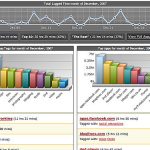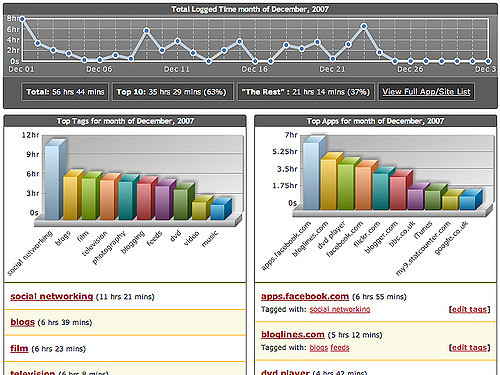
Image Credit: Dan Taylor-Watt
When we give a speech, one of our goals for giving the speech is to find a way to use the importance of public speaking to convince our audience about something. In order to sway their opinion, we often go looking for data that will support the point that we are trying to make. Although data can be a powerful tool that can help us to get people to agree with our point-of-view, it can also turn an audience away. If we use too much data in a speech or if we present it in a way that causes our audience to tune out, then we will have hurt our chances of convincing our audience. How can a speaker use data in the right way?
What’s The Right Way To Use Data In A Speech?
So just exactly what can go wrong when you add data to a speech that you are giving? If go about using data incorrectly, then you run the risk of causing your audience to not be inspired by what you are saying. What is going to happen is the data that you are presenting to them will require them to interpret it. This is an effort that can end up exhausting them and in the end may end up repelling them from your message. We need to keep in mind that for most of our presentations, we’re talking about things like people, not statistics and if we aren’t careful, our presentation of data is not going to generate an emotional response in our audience.
So what’s a speaker to do? When we decide to use data in a speech we need to take the time to frame it in a way that will both inspire and engage the audience that you will be addressing. As a speaker you need to realize that before you are going to be able to convince somebody about something you are going to have to find a way to reach their hearts before you reach their minds. Your biggest challenge here is that there will be people in your audience who have chosen to not believe what you are telling them. No amount of data, no matter if it is presented as a list, a spreadsheet, or a pie chart, will be enough proof to change their minds. Proof will not allow you to capture these people. Instead, you need to find a way to make an emotional connection with them.
When you have data that you think will help you to make your point as a part of your speech, you are going to have to find ways to get it from the dry and dusty sources that you got the data from and find a way to get it into your audience’s hearts. Yes, this means that you will probably end up using graphs and charts in your presentation; however, you will need to keep them simple and you will need to make sure that you take the time to carefully explain to your audience what you are showing them. A great way to get the ideas contained in your data across to your audience is to turn the data into pictures that you can show to your audience as you explain the data that is supporting the pictures.
Don’t Over Do It When You Use Data
When you want your data to connect with your audience, you can start things off by telling your audience what the data is going to show them. Once you’ve done this, you can then show them a picture that represents what you just told them. The picture does not have to be a chart or a graph, it just needs to capture the end result of what the data is telling your audience. As presenters we need to understand that in every audience there will always be a person who thinks that they know everything. What this means for us is that when we start presenting the results of our data they will undoubtedly speak up and try to find flaws in what you are saying. Be careful to not give this person the floor during your presentation – tell them that you’ll be willing to talk with them once the presentation is done.
One of the challenges that speakers run into when they are presenting data is that it takes a great deal of effort to make sure that you fully understand the data that you will be presenting. You don’t want to find yourself in a situation where you are using data in a presentation that you are not 100% sure of. What will happen if you do this, no matter how pretty you’ve been able to make the data look, is that as you try to explain the data you will probably start to become confused about what you are saying. The end result of this is that your credibility will start to get away from you and you may just end up looking foolish.
The good news about any data that you choose to use during a presentation is that out of that sea of data, there will always be a few points that can be used as summary items. What you are going to have to do before you give your speech is to take the time to review your data and identify what these key points are. The points can be totals, percentages, growth over time, impact, or amount of money spent. Your goal is to memorize these key points and then have them available to you in your back pocket during any Q&A period associated with your speech. The reason that you’ll want to do this is because if you can summon up key facts based on the data that you presented during a Q&A session, then this will serve to boost your credibility to your audience. This will show your audience that you really understand your topic.
What All Of This Means For You
Data is a powerful tool. Speakers who want to share the benefits of public speaking and convince their audiences about something would do well to include some data in their speech. However, data is a double edged sword. If used incorrectly, data can serve to put our audience to sleep or even worse cause them to reject both us and our idea. Data is a powerful tool for speakers, we just need to be careful about how we go about using it.
One of the biggest issues that we run into when we try to use data in a speech is that we are going to require our audience to interpret what we are telling them. The end result of this is that they may end up being tired and exhausted by our speech. When we decide to use data in a speech, we need to take the time to frame it in a way that will both inspire and engage the audience that you will be addressing. You are going to have to find a way to get your data to connect with your audience’s hearts. Using pictures to show the results of the data is a great way to make this happen. You need to be careful about any audience members who take exception with the data that you are presenting. Make sure that you never find yourself in a situation where you are presenting data that you are not fully sure of. Make sure that you memorize a few key points based on your data so that you can use them during any Q&A session after your speech.
Data is a great way to show your audience that what you are telling them is real. Your words are powerful, but if presented correctly, data can drive the point home. You’ll need to keep in mind that just presenting the data is not going to be enough. Instead, you will have to find ways to make your data come alive and really mean something to your audience. You need to connect with their hearts before your data can connect with their minds.
– Dr. Jim Anderson
Blue Elephant Consulting –
Your Source For Real World Public Speaking Skills™
Question For You: Where do you think the best place to include data in a speech is: the beginning, the middle, or at the end?
![]() Click here to get automatic updates when The Accidental Communicator Blog is updated.
Click here to get automatic updates when The Accidental Communicator Blog is updated.
P.S.: Free subscriptions to The Accidental Communicator Newsletter are now available. Subscribe now: Click Here!
Note: What we talked about are advanced speaking skills. If you are just starting out I highly recommend joining Toastmasters in order to get the benefits of public speaking. Look for a Toastmasters club to join in your home town by visiting the web site www.Toastmasters.org. Toastmasters is dedicated to helping their members to understand the importance of public speaking by developing listening skills and getting presentation tips. Toastmasters is how I got started speaking and it can help you also!

